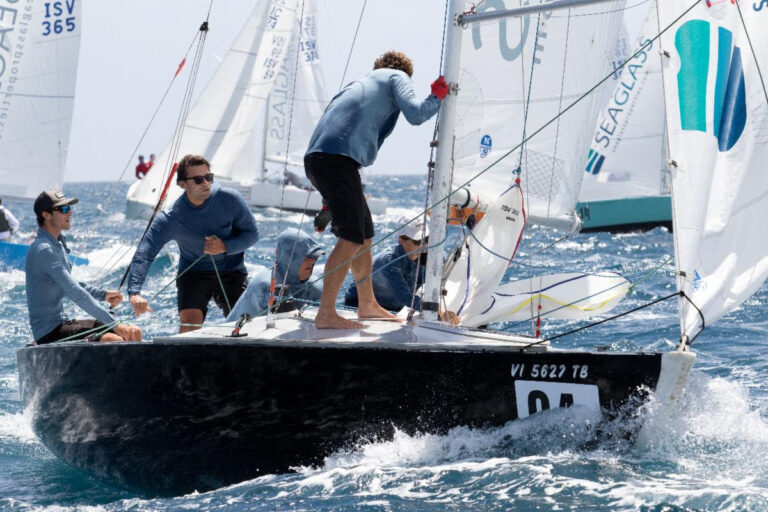
LaserVagoReview368
Jo Richards, a designer from England, who grew up with a penchant for sailing fast dinghies, likes drawing them now, and has achieved no small success in doing so. His designs, which include the rotomolded superstar the Pico, and a no-holds-barred canting-keeler named Full Pelt, have given him a well-earned reputation as a go-to guy for fast, small boats. Planing dinghies constructed by the rotomold method are durable, stiff, and inexpensive. When you combine these attributes with a design from Richards, you can see why the Laser Vago XD is a boat that keeps the fun in sailing. This boat is designed to be many things; singlehander, doublehander, fast trainer, and all-around fun, planing dinghy for whoever feels the need for speed in an inexpensive, durable design. Several key design features enable this 13’9” rocketship to get on a plane sooner than similar dinghies. The hard chine Richards designed into the hull combines with its rocker, which makes the boat handle like a dream during maneuvers. Its flared gunwales provide flotation and good righting moment. The XD version, which has 30 more square feet of sail area than the standard Vago, as well as a trapeze, is, quite simply, a ton of fun to sail. The Vago has plenty of versatility, allowing either one or two people to sail the boat with a variety of sail plans. The spacious cockpit enables you to tack and jibe with ease.The first thing you notice when stepping aboard the Vago is its stability, which comes as a result of its beam. Unlike some planing dinghies, which offer no room for respite, you’ll be able to relax on this boat when you have to stop to fix something, eat lunch, or take a break between races. I always like to get a feel for a boat before putting myself out on the trapeze, but I could tell right away the Vago was forgiving enough to hop right to it. I pre-set the jib, hooked in, and brought the mainsheet with me out on the wire. The boat was a dream to sail. I could find an easy groove upwind, bearing off a bit in the lulls to maintain the same angle of heel. I could feather a bit in the puffs until I began to lose speed, and then I’d crack off a touch. Tacking while on the wire is always a challenge the first time sailing a trapeze boat, but it wasn’t that big a deal with the Vago, as I found myself well in control. A self-tacking system would simplify tacks. Downwind was way too much fun. I simulated rounding a mark and setting the kite as fast as possible, again setting the jib in the most desirable position (I wanted to try it unfurled first) while concentrating on kite trim and driving. I was flying, and after getting used to the speed and angles before hitting the wire, popping over waves and sailing fast. I tried a few jibes and found no difficulties, and here, too, a self-tacking jib would help improve boathandling. A furled jib is the call, but when it’s howling, rolling the jib is the last thing you’re going to do. Sailing from the wire downwind was a bit trickier than upwind, but it was still a remarkably stable platform and only once did I find myself out of control. Overall, sailing the boat is a great experience mostly because of the speed. The Gnav Vang System (mounted atop the boom) really opens up the cockpit and helps the Vago separate itself from other small, traditional dinghies. Whether sailing the Vago with one or two you’ll find pulling off maneuvers to be simple. The Vago XD is priced at $8,200, including the dolly, and the fun factor makes it worth every dollar. It was a clear choice as our best one-design dinghy. This is the sort of boat that will surely get kids and adults-alone or together-out on the water more often.
For SW‘s complete 2008 Boat of the Year coverage, click here









